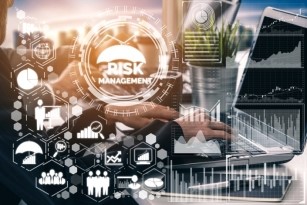 Frost & Sullivan’s recent analysis, Global Future Risks—Future-proofing Your Strategies, 2030, provides a compelling analysis that will help stakeholders understand the impact of future risks through the short, medium and long terms, and equip them to act on clear growth opportunities.
Frost & Sullivan’s recent analysis, Global Future Risks—Future-proofing Your Strategies, 2030, provides a compelling analysis that will help stakeholders understand the impact of future risks through the short, medium and long terms, and equip them to act on clear growth opportunities.
The study presents over 80 growth opportunities arising from 21 risks, which will help policymakers, businesses and individuals take immediate tactical and strategic actions, and draw plans to lower impact. Unpreparedness to address these challenges, which are looming across the globe, will adversely impact businesses, societies, economies, cultures, and personal lives.
For over five decades, Frost & Sullivan has become world-renowned for its role in helping investors, corporate leaders and governments navigate economic changes and identify disruptive technologies, Mega-trends, new business models and companies to action, resulting in a continuous flow of growth opportunities to drive future success.
“Risks are now increasingly interconnected, which, if amplified, can trigger a ripple effect across industries, regions, and diverse stakeholder groups. Therefore, mitigating them will involve measures to quantify relevant risks, estimate the probability of occurrence and the adoption of a cohesive, interdisciplinary, and multipronged approach,” said Murali Krishnan, Visionary Innovation Group Senior Industry Analyst at Frost & Sullivan.
Krishnan added: “With an estimated 200 billion connected devices by 2030, the risk of sophisticated cyberattacks will escalate. Therefore, companies should invest in future-casting tools that help identify the impact of such risks to their business, thereby detecting vulnerabilities and avoiding disruptions.”
To tap into growth opportunities emerging from the short-, mid- and long-term risks, organizations can focus on the following areas:
Short-term risks
- Privacy and disinformation risks: organizations must adopt a “privacy-by-design” approach, which goes beyond accepted privacy standards and assumes global regulatory compliance.
- Rise of infectious diseases: advanced technologies such as next-generation sequencing (NGS) and CRISPR-based diagnostics will enable new approaches in the treatment of infectious diseases.
- Water crisis: innovation in agricultural practices such as vertical farming and optimized crop selection can play an important role in reducing the ongoing water crisis.
Mid-term risks
- Urbanization: urbanization stress will trigger the demand for smart solutions such as intelligent grid control and electrification, smart buildings, and smart storage solutions.
- Climate change risks: organizations will emphasize investments in buildings with net-zero energy consumption, and greenhouse gas emissions will increase minimally.
Long-term risks
- Artificial intelligence (AI) as a threat: AI can be a strong reason for the polarization of jobs across the world, but investing in collaborative computational capabilities can help allocate an ideal division of tasks between humans and robots based on their distinct capabilities and deployment costs.
- National identity crisis: great business opportunities exist in providing digital authentication of eGovernment services such as digitization of birth, marriage, and death certificates, passports, and driving licenses.
Global Future Risks—Future-proofing Your Strategies, 2030 is the latest addition to Frost & Sullivan’s Visionary Innovation research and analyses available through the Frost & Sullivan Leadership Council, which helps organizations identify a continuous flow of growth opportunities to succeed in an unpredictable future.
By MediaBUZZ


